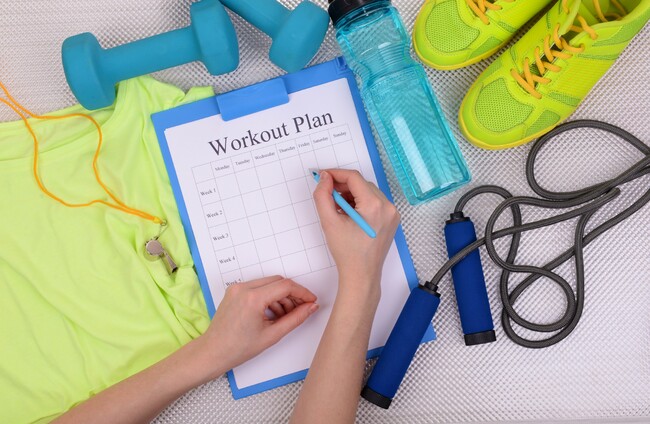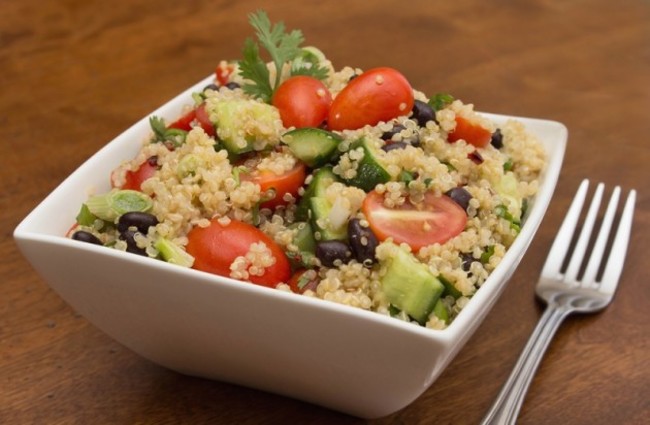
- Australia's largest state hits record-high COVID-19 cases despite weeks of strict lockdown. 'It's a tinderbox ready to explode,' one official said.
- eToro says crypto made up 73% of trading commissions in the last quarter, as retail customers dived in
- A flight attendant says she was too exhausted to report a passenger who shoved her when a flight was overbooked: report
- US jobless claims climb for first time in 5 weeks, to 353,000
EVER FEEL LIKE you’ve finally started to keep up with your fitness routine, but despite your commitment, you’re still not seeing the results you want?
Part of the problem could be that you’ve fallen for some fitness myths that are doing more harm than good.
But despite all the myths out there, there are also some easy, no-frills ways to make your workouts as efficient as possible. Use these and you’ll start to see your hard work pay off:
1. Weight train
While lifting weights won’t magically turn flabby areas into hard, muscly ones, it will help you build muscle tissue in other parts of your body. And that tissue will thicken underneath any fat above it. Once you start to slim down, that muscle will start to shine through.
Also, when it comes to weight training, gender doesn’t matter. So if you’ve been told you shouldn’t lift because you’ll “bulk up” — it’s time to toss that rumor to the wind. The ability to build large muscles is directly dependent on the amount of testosterone we have, and women on average produce far less testosterone than men. So weight training won’t make you look weird — instead, it’s a great way to add some tone and definition.
2. Try working out a different times of the day
Don’t feel like going for a run after a long day at work? Neither do a lot of people. The only way you’ll know which time of day works best for you for working out is by trying out several options.
And if you’re a morning person, here’s some good news: Some research suggests that working out first thing each day helps speed weight loss and boost energy levels by priming the body for an all-day fat burn.
Plus, getting more daylight may play an important role in shedding pounds. By making sure we align our internal clocks, or circadian rhythms, with the natural world, we may help give our metabolisms a boost. One recent study showed that people who basked in bright sunlight within two hours after waking tended to be thinner and better able to manage their weight than people who didn’t get any natural light, regardless of what they ate throughout the day.
3. Commit to training at least 3 times a week
If you want to see your body change, hitting the gym once a week won’t cut it.
“A minimum of three days per week, for a structured exercise program [is best],” Shawn Arent, an exercise scientist at Rutgers University, said. “Technically, you should do something every day, and by something I mean physical activity — just move. Because we’re finding more and more that the act of sitting counteracts any of the activity you do.”
4. Focus on small lifestyle tweaks rather than broad swipes
The problem with fad diets is simple: They’re temporary. In order to lose weight and keep it off, you have to find an eating regimen that you can stick with for life.
“You know we tend to say you go on a diet, but that also implies you’re going to go off of it. And that’s not how we should be looking at this,” Philip Stanforth of the University of Texas and the Fitness Institute of Texas recently said.
“Sometimes people are looking for the latest fad, but oftentimes it’s the fundamentals that are the most important and that make the biggest difference.” So try a few small changes first, like limiting dessert to just once a week or adding a serving of steamed veggies to every dinner.
5. Mix it up
Our bodies get used to the same old workout fairly quickly.
So mix it up. Love yoga? Do it a few times a week. In between, go for a run around your neighborhood, try a pilates class, or hit the gym for some weight lifting.
6. Keep a food diary
How many packets of sugar went into your coffee this morning?
Keeping track of what we’re eating and drinking can be tough, but attempting to keep a record of everything we put into our bodies in a day or a week can be a good way to start.
Of course, even when we’re making an effort to be more conscious of what we’re eating and how much we’re working out, we tend to give ourselves more credit than we deserve.
“People tend to overestimate their physical activity and underestimate how much food they eat,” says Stanforth. “They consistently think they’ve worked out more and consistently think they’ve eaten less.”
7. Alternate cardio with other forms of fitness
Tons of cardio — running, bicycling, etc. — doesn’t necessarily translate into weight loss. Think about it this way: You have to burn 3,500 calories — far more than the equivalent of the total amount of calories an average adult (male or female) should eat in an entire day — to burn or lose just one pound of fat.
So instead of pinning your fitness goals to one activity, be sure to commit to making other small tweaks in your lifestyle, like eating more fresh fruits and veggies and controlling your portion sizes.
8. Make change across the board
If you’re going to commit to a healthier lifestyle, it’s important to focus on what you’re putting into your body as well as how you’re training.
And when it comes to weight loss, the bulk of research suggests that improving your diet is far more important than simply hitting the gym harder — at least when you’re starting out.
“Studies tend to show that in terms of weight loss, diet plays a much bigger role than exercise,” Philip Stanforth, an exercise scientist at the University of Texas and the executive director of the Fitness Institute of Texas, told us.
Over the long-term, though, research suggests that regular workouts do become more important for staying fit. “When you look at people who’ve lost weight and are also managing to keep it off, exercise is important,” said Stanforth.
9. Try interval training
Good news: You can stop feeling guilty about not signing up for that marathon everyone’s talking about. As it turns out, you can get some of the same benefits of long-distance running without ever passing the 5-mile mark.
Running fast and hard for just five to 10 minutes a day can provide some of the same health benefits as running for hours can. In fact, people who run for less than an hour a week — so long as they get in those few minutes each day — get similar benefits in terms of heart health compared with those who run more than three hours a week.
Plus, years of recent research suggest that short bursts of intense exercise can provide some of the same health benefits as long, endurance-style workouts — and they also tend to be more fun.
10. Refuel with a lean protein snack instead of a sugary drink
Instead of gulping down a sports drink after your run (which is likely just sugar and water), refuel with lots of water and a lean protein snack, like some Greek yogurt.
Experts recommended refueling the body with about 20 grams of protein after a workout. “Protein ingestion during and/or immediately after exercise has been suggested to facilitate the … adaptive response to each exercise session, resulting in more effective muscle reconditioning,” writes the author of a recent paper from the Nestle Nutrition Institute workshop series.
11. Try not to let your workout regime lapse
Sadly, all those brawny muscles you worked so hard to build this summer will likely start to break down a few days after you cut back in the fall.
In most people, muscle can start to break down within a week without regular exercise. “If you stop training, you actually do get noticeable deconditioning, or the beginnings of deconditioning, with as little as seven days of complete rest,” Arent said. “It very much is an issue of use it or lose it.”
- Erin Brodwin, Business Insider
The42 is on Snapchat! Tap the button below on your phone to add!














Looking forward to this game. Two outstanding gaelic football counties playing one another. Hopefully it will be a great game with two talented teams just playing high quality, skilful football without any cynical or dirty fouls or anything like that.
Would love to know where this rumour came from!? Absolute rubbish. He’ll be there to lead the lads out Sunday week. Should be a great game.